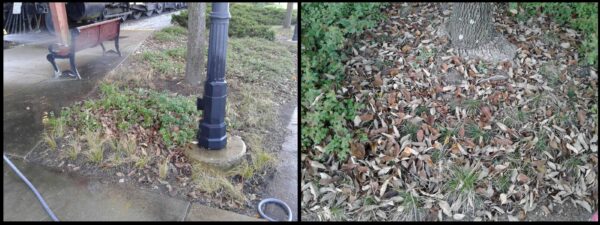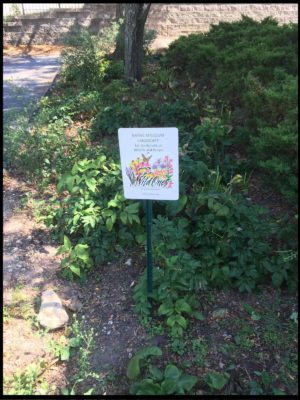by Wild Ones members Betty Struckhoff and April Anderson
In October 2018, St. Louis Wild Ones contributed to a project at the National Museum of Transportation to demonstrate the use of native groundcovers. Along with Wild Ones monetary support, some members participated in the planting of groundcovers in beds that ranged from almost full sun to full shade.
The old adage about perennials is that the first year they sleep (and then they creep and then they leap). Some of ours are a little sleepy but at least one decided to leap in the first season. Here are some side by side photos comparing October 2018 to September 2019.
The Prairie Pussytoes (Antennaria parlinii) have spread considerably. They should do their job of creating a native border below the Day Lilies in another year or two. They also provide larval food for the American Painted Lady Butterfly.
Prairie Dropseed (Sporobolus heterolepis) is slower to get established. But we know those roots are going deep.
The Pennsylvannia Sedge (Carex pensylvanica) occupies a very challenging place in dry shade. Yet it looks healthy, nestled in some early fallen leaves. Thank you, Scott Woodbury and Shaw Nature Reserve for donating these hardy plants.
Missouri Coneflower (Rudbeckia missouriensis) woke up ready to go! Look at the small plants last fall. American Beakgrain (Diarrhena obovata) has progressed nicely and is producing some seed to spread to fill in the row. Purple Poppy Mallow (Callirhoe involucrata) grew leggy and did flower and seed. We strung the stems along the top of the rocks in hopes to have more plants that will eventually cascade over the steep rocks lining a storm drain.
The full shade planting had a head start, with most of the plants added in the spring of 2018, and some earlier than that. In the fall season it is dominated by Golden Alexander (Zizia aptera), host plant for Black Swallowtails. There are also plenty of Late Purple Aster (Symphyotrichum patens), that will be blooming soon. Thanks go to our Wild Ones President Marsha Gebhardt for donating them. The shade here is from a Locust tree and the plants will be getting more sunlight as it begins to drop its leaves. Other plants include Golden Ragwort (Packera aurea) and Wild Ginger (Asarum canadense). Some Hostas from days of yore hide from the deer under the foliage.
Wild Ones and other volunteers hope these plantings, as they develop and mature, will serve as inspiration to MOT visitors.
There is an opportunity to see them with free museum admission on September 21, “Museum Day.” Get your free ticket online here
If you are interested in volunteering at the museum, contact April Anderson at team.nature.ed@gmail.com.







thanks for all the TLC, wonderful wild ones!! So many children and adults visit and will learn more about natives!!